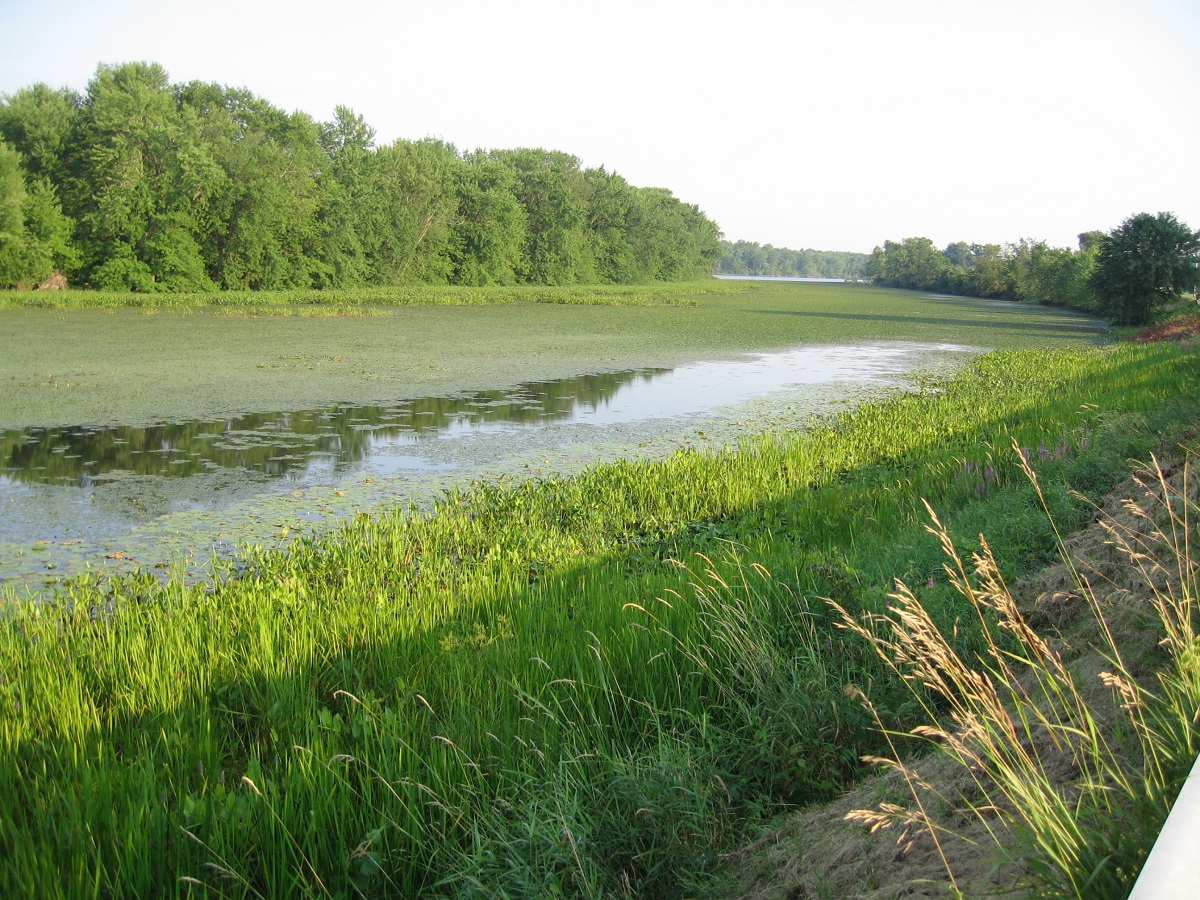Hudson River
Hazardous Waste Site | Hudson Falls, NY | 1947 to Present
What Happened?
Beginning in 1947 and continuing for approximately 30 years, General Electric (GE) Company released more than a million pounds of PCBspolychlorinated biphenyls; a class of chemicals previously used in manufacturing that remain in the environment for many decades, accumulate in living creatures, and pose health hazards to humans, wildlife, and fish. into the upper Hudson River. These chemicals were a byproduct of GE’s industrial operations at Fort Edward and Hudson Falls, New York. Since then, ongoing discharges of PCBs have continued from sediments and underground sources. Over time, PCBs have contaminated nearly 200 miles of the Hudson River and beyond into New York/New Jersey Harbor, making it the country’s largest Superfund site.
The Hudson River is a unique and nationally significant ecological, cultural, and economic resource. The river has been designated as an American Heritage River, essential fish habitat, and contains 40 Significant Coastal Fish and Wildlife Habitats, and four National Estuarine Research Reserve coastal wetland sites.
What Were the Impacts?
Surface and ground water, river sediments, floodplains, and associated fish and wildlife have all been heavily contaminated by PCBs for decades. Bans and advisories limiting the consumption of fish have existed for different sections of the river since 1976; consumption bans and advisories are also in place for waterfowl and other wildlife. In addition, the contamination has closed or severely restricted important commercial fisheries.
Concentrations of PCBs in surface waters continue to exceed federal and state water quality criteria. Navigational dredging of the Champlain Canal has been restricted. Significant amounts of highly contaminated sediments will not be dredged in the cleanup, meaning that fish advisories and contamination of wildlife will continue for decades after the cleanup is complete. The ecological impacts due to cleanup actions are also being evaluated.
What’s Happening Now?
The Hudson River PCBs site was proposed as a Superfund site in 1983 and listed in 1984. NOAA and other trusteesGovernment officials acting on behalf of the public when there is injury to, destruction of, loss of, or threat to natural resources. initiated a natural resource damage assessment in 1997.
In 2002, EPAU.S. Environmental Protection Agency; federal agency with the mission to protect human health and safeguard the environment. approved the dredging of approximately 2.65 million cubic yards of PCB-contaminated sediment from the upper Hudson River. Between 2009 and 2015, more than 2.75 million cubic yards of contaminated sediment (~ 310,000 lbs of PCBs) were dredged. Habitat reconstruction work and investigation of PCBs in the floodplain continues.
Beginning in 2001, the trustees released the first of several reports documenting injury to recreational fishing, waterfowl, surface waters, groundwater, and navigational resources, and are currently assessing other natural resource injuries. Once the assessment is complete, the trustees will evaluate potential restoration projects. The trustees continue to invite the public to submit restoration project ideas.
In November of 2020 the Hudson River Natural Resource Trustees released two data reports presenting findings on freshwater mussels in the Upper Hudson River in support of the Hudson River Natural Resource Damage Assessment. One report features the findings of a population assessment, while the other reports results for age determination.
In February of 2021 the Natural Resource Trustees for the Hudson River PCBs Superfund Site released a Remedial Injury Determination Report. The Trustees determined that dredging to remove polychlorinated biphenyls (PCBs) from the upper Hudson River between Fort Edwards and the Federal Dam at Troy caused injuries to natural resources such as wetlands, aquatic vegetation beds, freshwater mussels, and shoreline trees. A final quantification of the injury, including interim losses, will be provided in a subsequent report.
The full report is available for the public online: Determination of Injury to Natural Resources from Remedial Activities on the Hudson River: Riverine Fringing Wetlands, Aquatic Vegetation Beds, Shoreline Trees, and Native Freshwater Mussels. A fact sheet is also available.
“The high levels of PCB contamination throughout the Hudson ecosystem over so many miles and years illustrate both the challenge and opportunity for cleanup and restoration of this national treasure. A robust cleanup is needed to accelerate recovery and restoration is needed to compensate the public for decades of injuries."
Former Assessment and Restoration Division Chief
NOAA’s Office of Response and Restoration
Contacts
John Catena
NOAA Restoration Center
978-317-9566
john.catena@noaa.gov
Lisa Rosman
NOAA Assessment and Restoration Division
(240) 533 - 0431
tom.brosnan@noaa.gov








